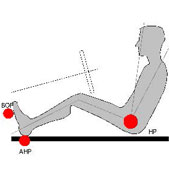According to international Ergonomics Association (IEA) ergonomics can be broadly classified into:
• Physical Ergonomics
• Cognitive Ergonomics
• Organizational Ergonomics
Physical Ergonomics:
It is concerned with human anatomical, anthropometric, physiological and biomechanical characteristics as they related to physical activity. Relevant topics may include working postures, material handling, repetitive movements, work related musculoskeletal disorders, workplace layout, health and safety.
Cognitive Ergonomics:
A proper fit of a product to a user does not end with physical interfaces. Cognitive/perceptual ergonomics is concerned with mental processes, such as perception, memory, reasoning, and motor response, as they affect interactions among humans and other elements of a system. Relevant topics include mental workload, decision-making, skilled performance, human-computer interaction, human reliability, work stress and training as these may relate to human-system and Human computer interaction design.
Organizational Ergonomics:
It is concerned with the optimization of socio technical systems, including their organizational structures, policies, and processes. Relevant topics include communication, crew resource management, work design, design of working times, teamwork, community ergonomics, cooperative work, new work programs, virtual organizations, telework, and quality management.

